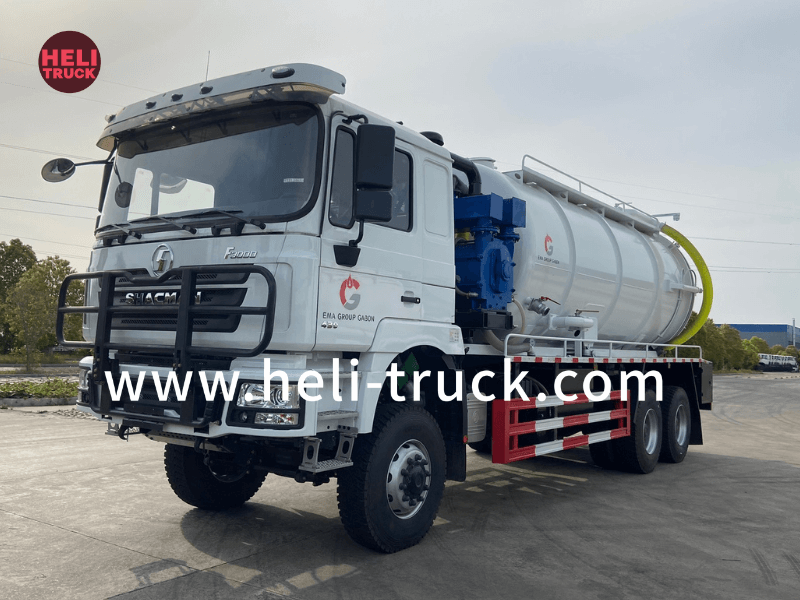Introduction:
Waste management is an essential aspect of modern society, and vacuum trucks play a crucial role in the collection and disposal of various waste materials. These specialized vehicles are designed to suck up and transport liquid and solid waste, making them indispensable in industries such as construction, oil and gas, and municipal services. However, operating vacuum trucks requires specific knowledge and skills to ensure efficient waste disposal and maintain a safe working environment. In this article, we will explore the importance of vacuum truck waste disposal training and discuss the key elements involved in this specialized training program.
1. Understanding the Vacuum Truck Waste Disposal Process:
Before delving into the intricacies of vacuum truck waste disposal training, it is essential to comprehend the overall process and equipment involved. Vacuum trucks are equipped with a large storage tank, a powerful vacuum pump, and various hoses and nozzles to facilitate waste suction and transportation. The process typically involves locating and accessing the waste source, connecting the appropriate hoses and nozzles, and activating the vacuum system to extract the waste material. Understanding the components and functions of a vacuum truck is the foundation upon which effective training can be built.
2. Identifying and Handling Different Types of Waste:
One of the primary challenges in vacuum truck waste disposal is dealing with a wide range of waste materials. These can vary from liquid substances like sludge, sewage, and hazardous chemicals to solid debris such as stones, bricks, and construction waste. Proper training should include comprehensive guidance on identifying different types of waste and the appropriate methods for handling and disposing of each. This knowledge is crucial to prevent cross-contamination, comply with regulations, and ensure the safety of both the operators and the environment.
3. Equipment Operation and Maintenance:
Operating a vacuum truck necessitates a thorough understanding of its equipment and maintenance requirements. Training should cover topics such as starting and shutting down the vehicle, operating the vacuum pump, and controlling the pressure and flow of the suction system. Additionally, participants should be educated on routine maintenance procedures, including inspections, cleaning, and troubleshooting common issues. By providing comprehensive training in equipment operation and maintenance, companies can ensure the longevity of their vacuum trucks while minimizing downtime and repair costs.
4. Health and Safety Guidelines:
Safety should be a top priority in any vacuum truck waste disposal operation. Training programs must emphasize the importance of personal protective equipment (PPE), including helmets, gloves, safety glasses, and appropriate clothing. Operators should also be trained in emergency response procedures, including how to handle spills, leaks, and potential hazards. Furthermore, awareness of potential risks associated with toxic or flammable waste materials is crucial. By instilling a safety-first mindset and adhering to established guidelines, companies can mitigate accidents, injuries, and environmental damage.
5. Environmental Regulations and Compliance:
The disposal of waste materials is subject to strict environmental regulations in most jurisdictions. Vacuum truck operators must be well-versed in these regulations to ensure compliance and avoid legal penalties. Training should cover topics such as waste classification, transportation permits, disposal site selection, and documentation requirements. Moreover, operators should be educated on environmentally friendly practices, such as recycling and reusing materials whenever possible. By staying up to date with evolving regulations and implementing sustainable waste management practices, companies can enhance their reputation and contribute to a cleaner environment.
6. Emergency Preparedness and Contingency Planning:
Vacuum truck waste disposal operations may encounter unforeseen circumstances, such as equipment failure, spills, or emergencies. Refuse compactor truck features should include emergency preparedness and contingency planning to equip operators with the necessary skills to respond effectively. This training may involve simulation exercises, teaching operators how to handle critical situations, and coordinating with emergency response teams. By proactively preparing for emergencies, companies can minimize the potential impact on the environment, public health, and their own operations.
7. Continuous Training and Knowledge Enhancement:
As technology advances and waste management practices evolve, it is crucial to provide ongoing training and knowledge enhancement opportunities to vacuum truck operators. This can be achieved through regular refresher courses, workshops, and access to updated industry resources. Continuous training ensures that operators remain well-informed about the latest best practices, technological advancements, and regulatory changes. By investing in the professional development of their workforce, companies can optimize waste disposal processes, improve efficiency, and stay ahead of the competition.

Conclusion:
Effective vacuum truck waste disposal training is essential for maximizing efficiency and maintaining a safe working environment. By providing comprehensive training that covers the entire waste disposal process, identification and handling of different waste types, equipment operation and maintenance, health and safety guidelines, environmental regulations, emergency preparedness, and continuous learning, companies can ensure that their vacuum truck operators are well-prepared for their roles. With a well-trained workforce, organizations can optimize waste management practices, minimize risks, and contribute to a cleaner and more sustainable future.
